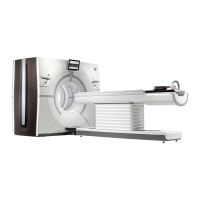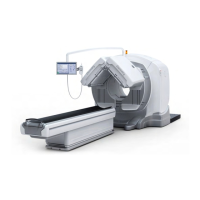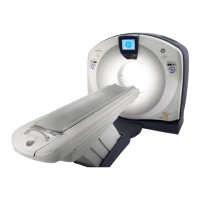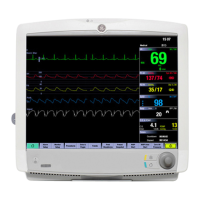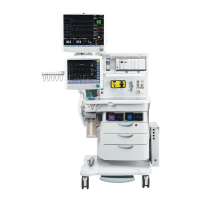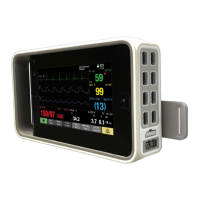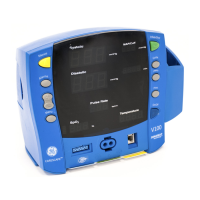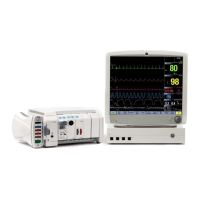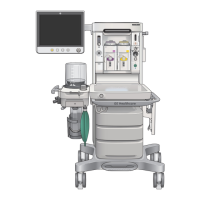GE MEDICAL SYSTEMS CT 9800 QUICK SYSTEM
Rev. 12 Direction 18000
6-9-26
4) Review sag data.
• Channel difference must be less than 3.0 channels for an unblocked detector and less than 0.3 channels
for a blocked detector.
• The corresponding tube positions should be approximately 180° apart. They represent the gantry
positions where the extreme positions of sag were reported. Typically they will be 280° to 300° and 100°
to 120°. At the present time, there is no specification on this measurement.
• The difference in first and last channels relates to the hysteresis in the system. At the present time, there
is no specification on this measurement.
5) Excessive sag amplitude
The sag readings of Step 5 are the sum of at least three different components.
a. Detector gravity sag on its shock mounts-
This is the major component of total sag. This is a positive (+) factor. More resilient
shock mounts will increase sag and lead to a shading problem on scans of the small
phantom. Stiffer shock mounts will reduce sag, but may increase detector microphonics.
b. Tube insert float within the tube casing-
This is a smaller component of total sag. This is a negative (-) factor as it is working
against gravity. A Tube unit with considerable insert float will have low sag, however, as
the focal spot location moves with respect to the center of the body attenuator a center
artifact may be produced.
c. Tube mount sag in the gantry-
This is also a minor component of total sag. This is a positive (+) factor and is generally
of a fixed amount which varies little from one system to another unless the tube is loose
in its mount.
Excessive sag can be analyzed by blocking the detector and repeating the procedure. The new sag
readings are now all components in the system except the detector and its shock mounts.
The parts required to block the detector are listed under 46-229753G1. Identification and their installation
is shown in Illustration 6-9-16. Maximum sag with the detector blocked should be less than 0.3 channels.
If detector sag is less than 0.3 channels when blocked, replace detector shock mounts. Note: these
shock mounts should always be replaced as a set of three mounts. If sag is greater than 0.3 when
blocked, check tube mounting for looseness. It may be loose in casing bolts to tube support bracket, or in
support bracket to gantry. If the tube is not found loose, check the collimator for tightness. If nothing else
is found, as a last resort, replace the tube, as the insert may be loose inside the casing.
6) Excessive hysteresis will usually causes a TWALFFIE artifact. This is the artifact which shows two parallel
streaks tangent to the edge of a high contrast pin. The two streaks correspond to the first and last views of
the scan and the artifact results from an excessive displacement of these two views.

